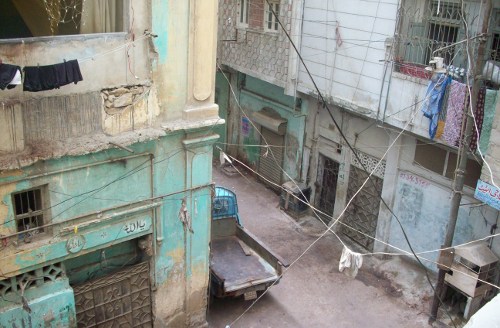While the fighting with the Taliban in Pakistan's volatile border areas dominates international coverage of Pakistan, conflicts of different natures continue to rage in other parts of the country. Indeed this summer saw some of the worst fighting in Karachi for twenty years. This article is a reflection of my visit to Lyari, a district of Karachi, right before fighting between rival gangs paralysed the whole area in July 2011.

I went to Lyari on my recent visit to Pakistan and got to know of a lot more than what is reported by the media about the place and the people. On my way to Lyari, I was accompanied by locals and one of them asked me, “What do you think of Lyari?” I diplomatically replied, “my understanding of the place is limited and I would rather learn more from you”. They did in fact admit that media reports are not completely incorrect in labelling Lyari insecure and a home to violence. The place was calm during the day but there was fear of the dark nights and gang fights. I could sense that there was a disaster in the making. Soon after, clashes began between two groups began – the so-called Peoples Amn (peace) Committee (PAC), and the Kutchi Raabta Committee (KRC) – both fighting for control in Lyari. Both PAC and KRC are Lyari-based political groups. It is important to clarify that PAC is not a peacebuilding group, though it may appear to be from its name, it is one of the groups responsible for the violence.
Gangs are like warlords in the area. In the areas under the influence of local gangs there is no police control. TV news reports on recent gang fights in Lyari claim that “armed gangs exchanged fire with no interference from police anywhere in sight”. In the presence of gangs there is no security for common people in Lyari. Members of gangs do whatever they want to – it is almost like they have created their own kingdom. In October 2011, more than 200 staff of the Shaheed Benazir Bhutto Medical College in Lyari resigned claiming that they cannot bear the ‘harassment’ of the gangs anymore. The majority of the female staff members felt that they were provided with insufficient security and were required to do night shifts.
The human cost of these particular gang fights was 37 deaths in the first 24 hours alone. According to an Al Jazeera report, 300 people were killed in July 2011, making it the deadliest month in two decades in Karachi. Sadly, such figures may not be shocking to the inhabitants of Karachi, who have had to grow accustomed to such levels of violent clashes between political groups and terrorism. However, it is shocking for the rest of the country and the world.
At the end of July 2011, President Zardari promised millions of dollarsfor development in Lyari and convinced the PAC and KRC to live side-by-side peacefully in the area. It was not a permanent solution and the fights continued. Ultimately, the government had to send the Rangers (a Pakistani paramilitary force) to settle the situation in Lyari because it was impossible for the police to regain control. The Rangers did their job, at least by immediately crushing the violence. Is that a permanent solution? I would argue not, considering what I learned during my visit to Lyari.
My abiding impression of the place was that it is very under-developed in terms of infrastructure, perhaps because the area is home to the marginalised. The place was the complete opposite of other places I visited in Karachi. With it's narrow and dirty streets, broken roads and homes it seems as if there is no presence of the city development authority in Lyari. Is it because they are scared of this area which is notorious for gang wars? It appears as if local political representatives have not been paying any attention to the development of the area. It looks like the largest slum of Karachi. I felt a great discontent among the people against the politicians. In the case of Lyari, I remember what Aristotle said, “Poverty is the parent of revolution and crime”.
A permanent solution is needed to address the socio-economic, political and other challenges faced by the people in Lyari. They need a more sustainable approach based on infrastructural development, education, social awareness and the effectiveness of law enforcement. Nonetheless, in the short-run the prevalence of security is a pre-requisite for development in Lyari. It seems that some relevant authorities are addressing this issue – recently PAC has been banned by the Sindh Home Department from carrying out any political or social activities. I see this as a step in the right direction to maintain the law and order needed for achieving other desired objectives for the welfare of the people of Lyari.






